Research
I am a computational high-energy astrophysicist interested in compact objects. I see space as the ultimate laboratory where theories can be tested in the most extreme environments imaginable; compact objects are one of the best examples of this. I am an Assistant Professor at the University of Wisconsin, Milwaukee. Before that I was a NASA Hubble Fellowship Program, Einstein Fellow at Princeton University, was a member of the Institute for Advanced Study (IAS), and was a National Science Foundation (NSF) Astronomy and Astrophysics Postdoctoral Fellow. I am a member of the Event Horizon Telescope Collaboration (EHTC). Much of my work has focused on preparing for EHT observations, as well as analyzing and interpreting the data. I co-coordinated the Gravitational Physics Inputs Working Group within the EHT for two and a half years and co-coordinated that working group's first large-scale project, the sixth paper in the Sgr A* series. I also developed a machine-learning based algorithm, PRIMO, for EHTC data analysis that uses high-resolution, high-fidelity simulations as a training set for interferometric imaging. I used the PRIMO algorithm to reanalyze EHT data and achieved the maximum resolution of the array. A few past and current research projects from my group are highlighted below.
PRIMO provides a sharper look at the black hole in M87
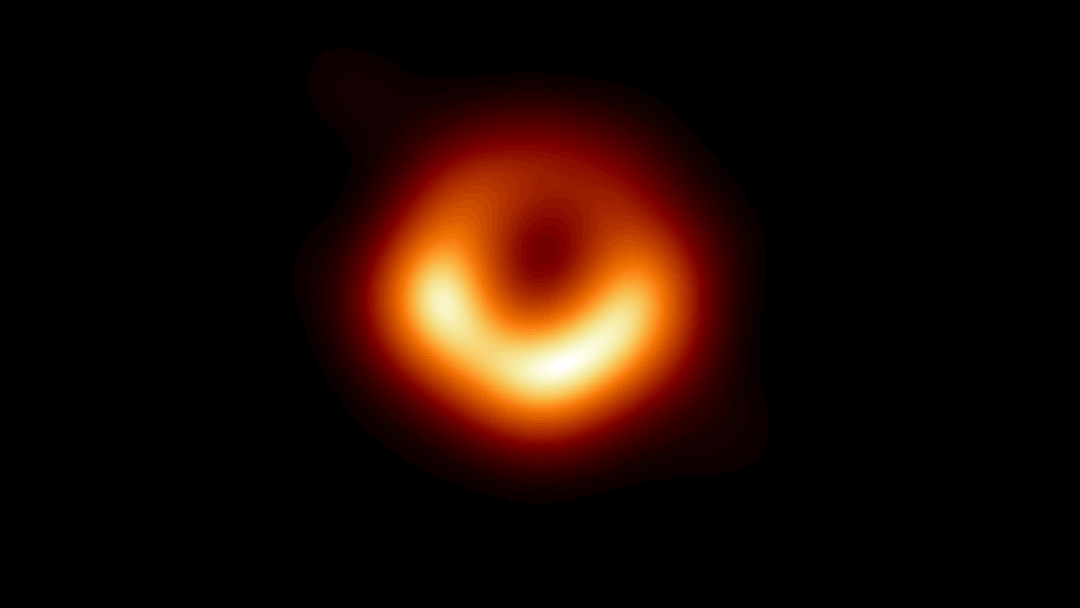 Image credit:
Medeiros et al. 2023
Image credit:
Medeiros et al. 2023
After the EHT published the first image of the black hole in the galaxy M87, I was inspired to develop an algorithm that could produce a crisper image. This lead to the development of the machine learning based algorithm PRIMO, which is described below. We used PRIMO to re-analyze EHT data and produced an image that is consistent with the previous EHT image of M87 and achieves the maximum resolution of the array. The ring diameter is consistent with previous publications, but the constraint on the ring width is tighter by a factor of two. The brightness depression at the center is significantly deeper than earlier images. The press release can be found here and the full paper can be found here. The article was also highlighted in a AAS NOVA article, which can be found here.
PCA-based algorithm for interferometric data analysis: PRIMO
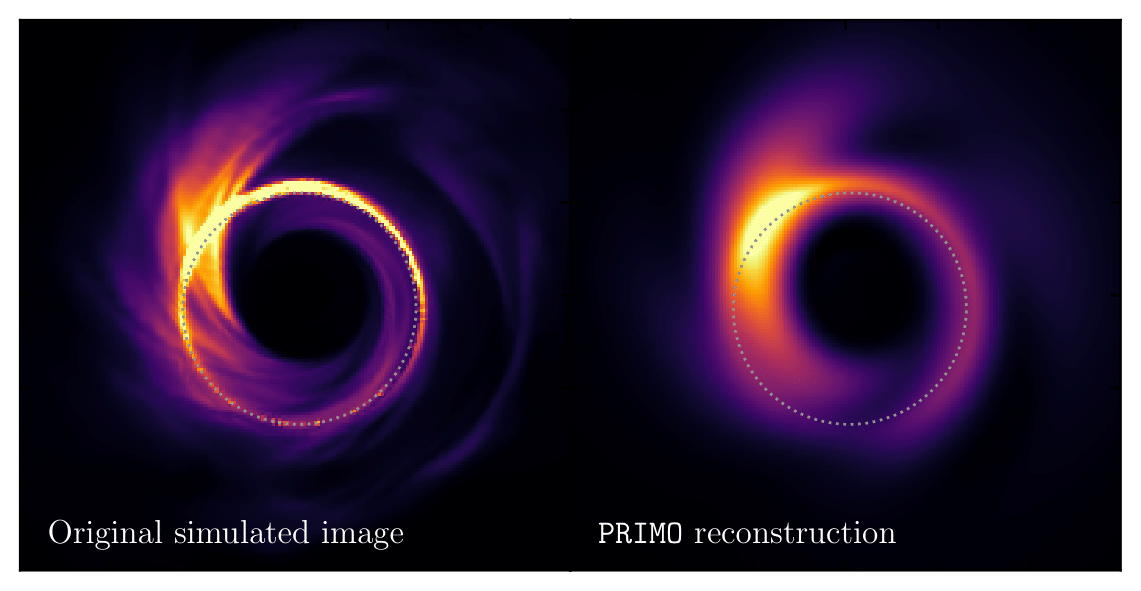 Figure from
Medeiros et al. 2022
Figure from
Medeiros et al. 2022
I developed a novel algorithm for interferometric data analysis that uses a large library of high-fidelity general relativistic magnetohydrodynamic plus radiative ray-tracing simulations as a training set. Principal-component interferometric modeling (PRIMO) uses dictionary learning to fill in regions of the Fourier domain where the EHT does not have data. PRIMO produces higher resolution images that are free of artifacts like the bright "knots" along the ring in both the M87 and Sgr A* images.
This figure compares a simulated image of a black hole at 1.3 mm wavelength (left) to a PRIMO reconstruction of the image (right). The PRIMO reconstruction is the result of fitting 20 principal components to synthetic data. The data were created by simulating an EHT observation (that mimics the 2017 EHT observations of M87) of the original simulated image.
First resolved image of our black hole (Sgr A*)
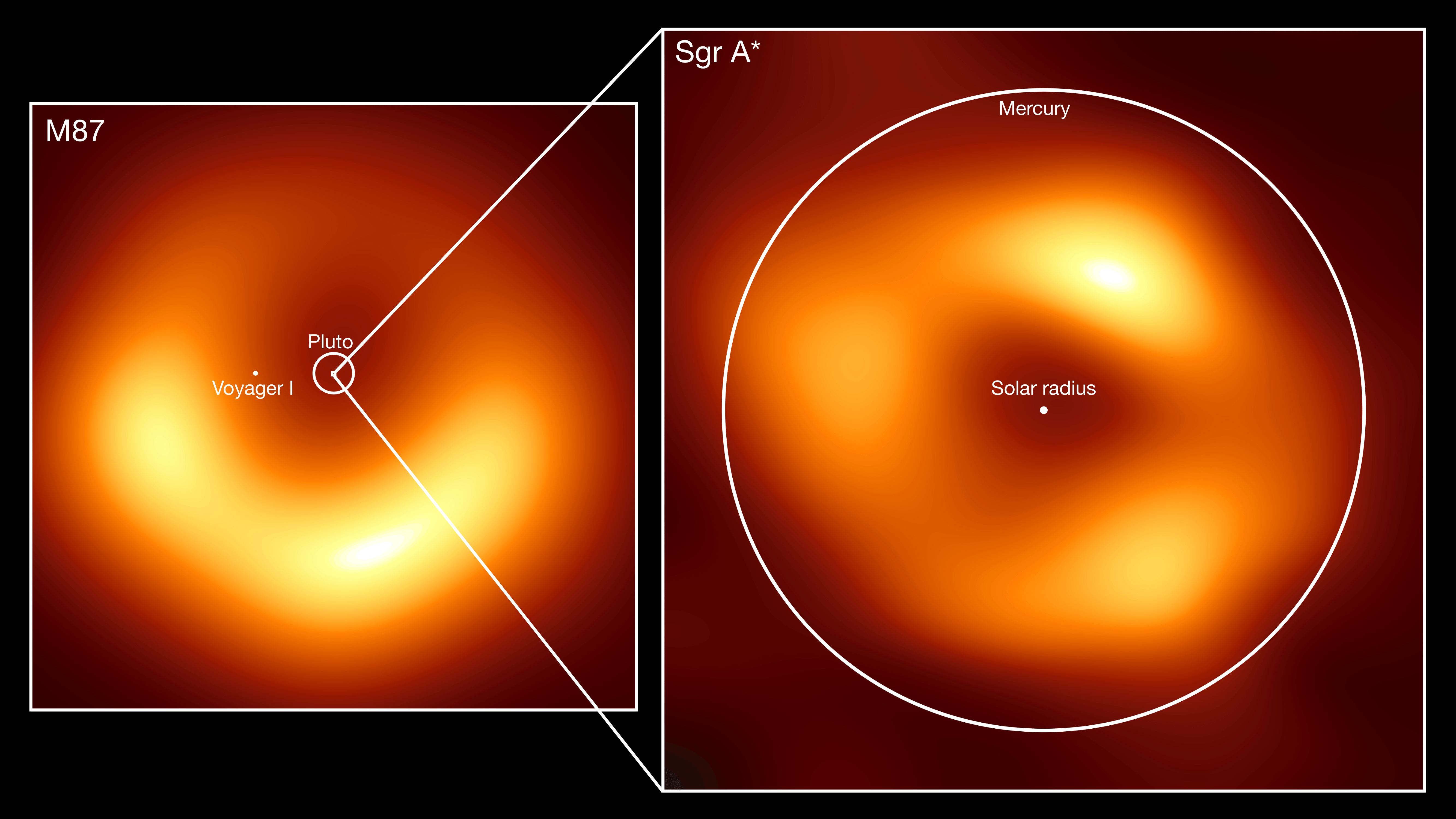 Image
credit: EHT, Lia Medeiros, Randall Munroe.
Image
credit: EHT, Lia Medeiros, Randall Munroe.
On May 12, 2022 the EHT published the first image of the black hole at the center of our own galaxy called Sagittarius A * (Sgr A*) in a series of six papers. The papers can be found here and the IAS press release can be found here. I was the co-lead of Paper VI in this series, which focuses on using these new results to test fundamental physics. I discuss some of the main results of this paper in my article entitled "Black Holes as Laboratories" in the Fall 2022 edition of the IAS Institute Letter.
The figure shows the EHT image of the black hole in M87 (left) and the EHT image of the black hole in the center of our own galaxy (Sagittarius A*, Sgr A*, right). The sizes of the images denote their relative size on the sky as seen from the Earth. The Sgr A* image is also shown in the center of the M87 image to scale but is too small to see. I also compare the real size scales of these two black holes with the sizes of orbits and objects in our solar system (inspired by an XKCD comic of the M87 results).
Testing gravity with the EHT
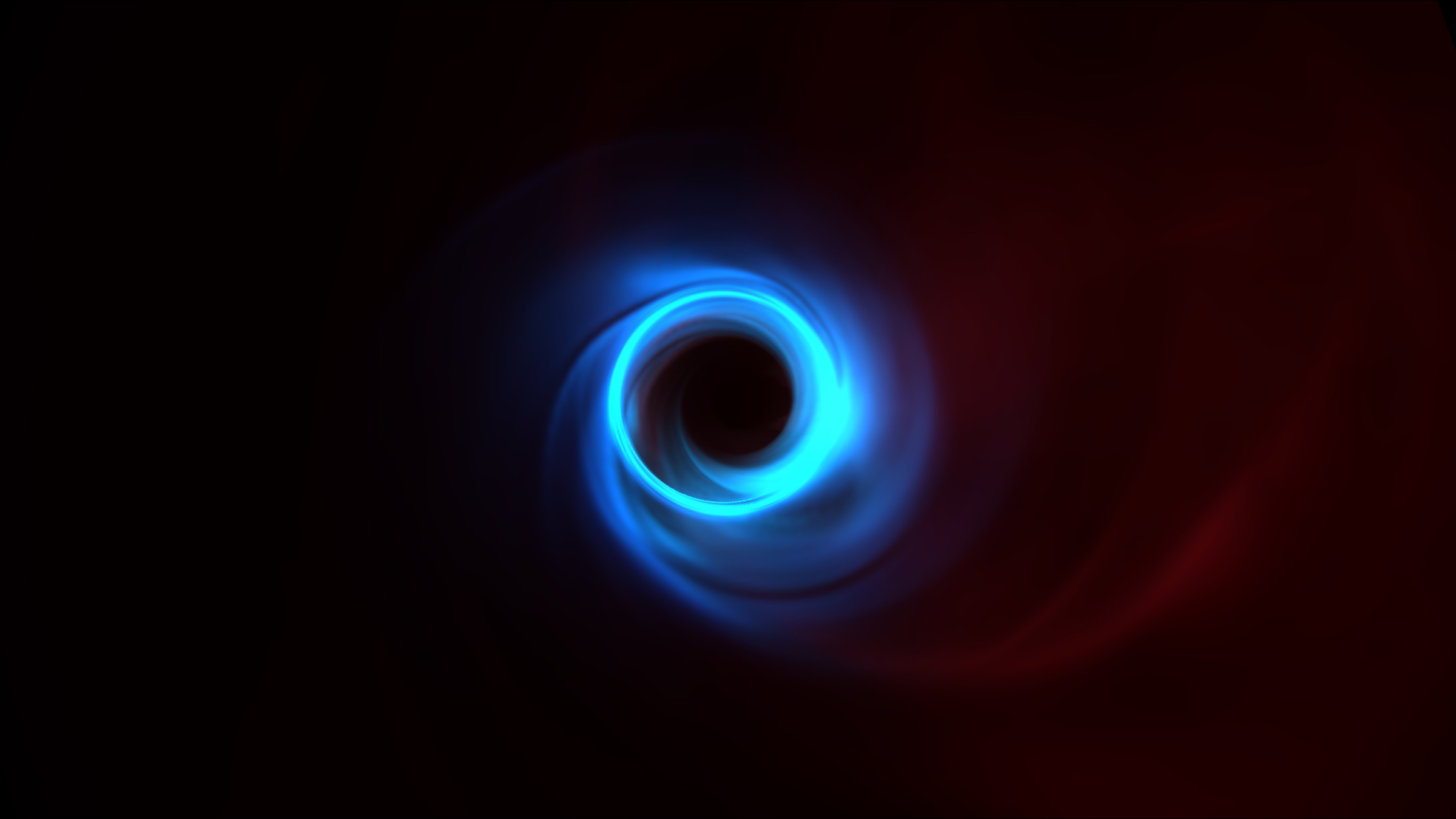 Lia Medeiros
Lia Medeiros
In October 2020, my collaborators and I published a new test of gravity using the image of the black hole in M87 (article, EHT press release, IAS press release). This work uses the measured size and uncertainty of the M87 black hole shadow (the shadow that the black hole casts on the surrounding emission) to place constraints on deviations away from the black hole predicted by general relativity. We employ a set of parametrized metrics that deviate from the Kerr metric and use both analytic calculations and geodesic ray-tracing simulations to place constraints on the deviation parameters in these metrics. The simulations used in this paper were originally presented in Medeiros et al. 2020
The interactive plots at the bottom of this webpage show how the observer's inclination, the black hole's spin, and different deviation parameters affect the size and shape of the black hole shadow.
First M87 EHT Results
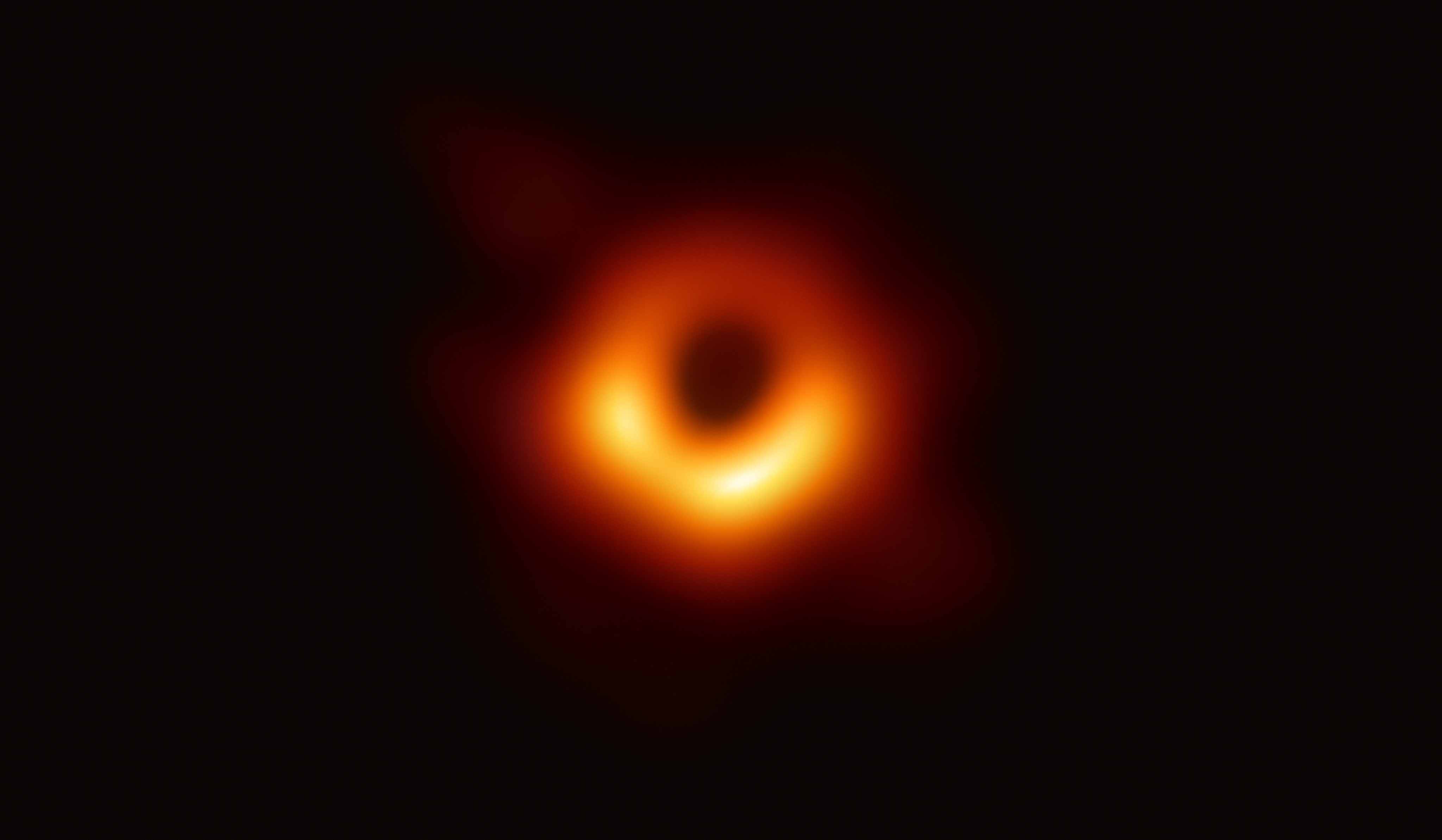 Event Horizon Telescope Collaboration
Event Horizon Telescope Collaboration
The Event Horizon Telescope (EHT) is a Very Long Baseline Interferometer (VLBI) that consists of several radio telescopes spread all over the world. The EHT performed its first observations in early 2017 and the first results, the first image of a black hole at event-horizon scale resolution, were published on April 10th, 2019.
As a member of the EHT I contributed to several different aspects of this project including running simulations to predict and understand what the EHT observes, imaging, and model comparison.
Links to papersEHT I, EHT II, EHT III, EHT IV, EHT V, EHT VI
Original Press Release
Variability and Principal Components Analysis
I've been using general relativistic magnetohydrodynamic (GRMHD) simulations of hot plasma falling into supermassive black holes, combined with radiative transfer calculations, to understand how the intrinsic variability from the source affects EHT data, see e.g. Medeiros et al. 2017, Medeiros et al. 2018.
I also used principal components analysis (PCA) to characterize and understand the variability in GRMHD simulations and to identify the images that are unusual (i.e. outliers). This work was highlighted in an AAS Nova article, and the original paper can be found here.
About me
 Dan Komoda, Institute for Advanced Study
Dan Komoda, Institute for Advanced Study
I have been an assistant professor in the Physics and Astronomy Department at the University of Wisconsin, Milwaukee and a member of the Center for Gravitation, Cosmology, and Astrophysics (CGCA) since January 2025. Before that I was a NASA Hubble Fellowship Program, Einstein Fellow at Princeton University (2023-2024), a member of the IAS (2019-2023), and an NSF Astronomy and Astrophysics Postdoctoral Fellow (2019-2022). I completed my undergraduate education at the University of California-Berkeley in Physics and Astrophysics, class of 2013. I then received my Masters and PhD (2019) in Physics from the University of California-Santa Barbara. After completing my classes in Santa Barbara, I took advantage of the flexibility allowed by an NSF Graduate Research Fellowship (GRFP) and spent three years at the Steward Observatory at The University of Arizona and one year at the Black Hole Initiative at Harvard. My PhD thesis was completed in collaboration with Feryal Özel and Dimitrios Psaltis.
I was born in Rio de Janeiro, Brazil and spent most of my childhood living in several cities in Brazil and a few years in Cambridge, England. One of the highlights of my career has been having the opportunity to engage with the scientific community in Brazil. I've given many talks in Brazil to both academic and public audiences in both English and Portuguese.
Outreach
One of my favorite things is getting others excited about physics and astronomy. To me black holes are just about the coolest things out there, and I love sharing my enthusiasm with others. I frequently give public talks and really enjoy visiting classrooms. If you would like me to come to your classroom or event send me an email at lia2 AT uwm.edu. I include a few links to talks I've given below.
Public Talks
Public Talks in Portuguese
Science Talks
- HEP/Astro Results Forum on PRIMO, 2023
- EHT collaboration meeting talk, 2021
- Black Hole PIRE webinar on using PCA for EHT data analysis, 2021
- KITP online conference "The Frontiers of Event Horizon Scale Accretion", 2020
- Virtual talk, Latin American Webinars (LAW) Physics, 2019
- IAS informal Seminar talk on EHT Sgr A* results
Outreach Materials
- PIRE zoom classroom event for grades 8-12 in collaboration with Dimitrios Psaltis, 2019 (Accompanying lesson plans and activities)
- Github repository (based on the curriculum from the PIRE zoom classroom) containing several google colab python notebooks where students can learn basic programming, Kepler's Laws, and can apply what they've learned to re-create a Nobel-prize winning experiment, measuring the mass of the galactic center black hole (Sgr A*) using the orbits of nearby stars.
- Introduction to astronomy through hands-on activities curriculum (in English and some in Spanish). The curriculum primarily focuses on light and how astronomers use light to learn about the universe.
Interactive Shadows Plots
To test Einstein's theory of gravity with images of supermassive black holes, we relate the size of the ring of emission in black hole images to the size of the black hole shadow. The black hole shadow is defined as the critical impact parameter between photons that escape to infinity and those that fall into the black hole, as viewed by an observer at infinity.
A few of my previous research projects focused on simulating the black hole shadow for black holes that deviate away from the expectations of general relativity (GR, Einstein's theory of gravity). In the interactive plots below you can change the deviation parameters of some parametrized black hole metrics that deviate from GR and see how the size and the shape of the black hole shadow changes as these deviation parameters are changed.
Plots are not mobile compatible. Please use a laptop or desktop for the full experience.